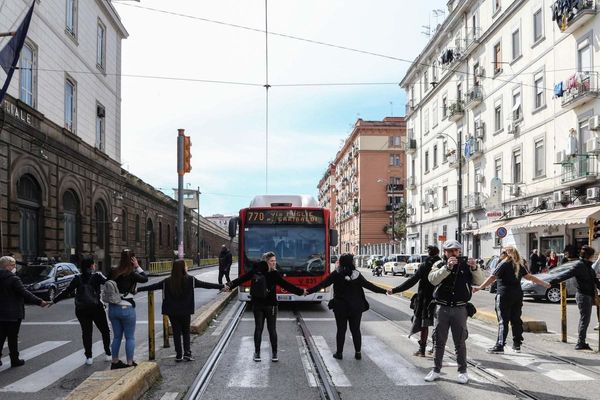
Smart traffic systems are supposed to make our roads safer and more efficient, but what happens when the technology fails? As cities race to adopt intelligent traffic lights, sensors, and AI-driven controls, drivers are sometimes left at the mercy of glitches and malfunctions. These failures can lead to confusion, gridlock, and even dangerous accidents. If you’ve ever been stuck at a green light that never changes or watched a busy intersection descend into chaos, you know how quickly things can go wrong. Understanding the risks of malfunctioning smart traffic systems is crucial for anyone who drives, bikes, or walks in a modern city. Let’s explore eight real-world incidents where these high-tech systems caused more harm than good—and what you can do to stay safe.
1. The Never-Ending Red Light
Imagine sitting at a red light that refuses to turn green, no matter how long you wait. This scenario isn’t just frustrating—it’s a common result of malfunctioning smart traffic systems. When sensors embedded in the road fail to detect waiting vehicles, the light cycle can get stuck. Drivers may become impatient and run the light, increasing the risk of collisions. If you find yourself in this situation, it’s best to remain patient and avoid risky maneuvers. Instead, report the issue to your local traffic authority or use a non-emergency police line. Staying calm and following the rules can help prevent accidents caused by these smart traffic system failures.
2. Conflicting Green Lights
One of the most dangerous malfunctions occurs when two directions at an intersection receive green lights simultaneously. This can happen if the central control system loses synchronization or if a software update introduces a bug. The result is chaos, as drivers from both directions enter the intersection, leading to high-speed crashes. If you ever notice conflicting signals, stop immediately and wait for the confusion to clear. Alerting authorities as soon as possible can help prevent further incidents.
3. Sensor Blind Spots
Smart traffic systems rely on sensors to detect vehicles, cyclists, and pedestrians. However, these sensors can develop blind spots due to dirt, weather, or technical faults. When a sensor fails to register a waiting car or a crossing pedestrian, the system may skip their turn or fail to activate a walk signal. This can leave people stranded or encourage risky behavior, like jaywalking or illegal turns. To minimize your risk, always make eye contact with drivers and never assume the system has seen you. If you notice repeated issues at a particular intersection, report them to your city’s transportation department.
4. Emergency Vehicle Delays
Many smart traffic systems are designed to give priority to emergency vehicles by changing lights in their favor. But ambulances and fire trucks can get stuck in traffic like everyone else when these systems malfunction. This delay can have life-or-death consequences. If you see an emergency vehicle struggling to get through an intersection, do your best to move aside safely, even if the light is green for you. Remember, malfunctioning smart traffic systems can disrupt the flow for everyone, so extra caution is always warranted.
5. Flashing Yellow or Blacked-Out Intersections
A power surge or software crash can cause smart traffic lights to flash yellow or go completely dark. While traditional intersections default to a four-way stop in these cases, not all drivers know the rules. This confusion can lead to fender benders or worse. If you approach a malfunctioning intersection, treat it as a four-way stop and proceed with caution. Educating yourself on the proper response can help you avoid becoming part of the problem when smart traffic systems fail.
6. Inaccurate Traffic Data
Smart traffic systems often use real-time data to adjust light cycles and manage congestion. But when sensors or communication networks fail, the system may rely on outdated or incorrect information. This can cause unnecessary delays, sudden stops, or even direct drivers into gridlocked areas. To avoid getting caught in these situations, use multiple sources for traffic updates, such as navigation apps and local radio. Staying informed can help you navigate around the pitfalls of malfunctioning smart traffic systems.
7. Pedestrian Signal Failures
Pedestrian safety is a major selling point for smart traffic systems, but it can put people at risk when the technology fails. Malfunctioning walk signals may leave pedestrians guessing when it’s safe to cross, leading to dangerous misjudgments. If you encounter a broken pedestrian signal, wait for a clear gap in traffic before crossing and make sure drivers see you. Cities are working to improve these systems, but until then, extra vigilance is your best defense.
8. Unintended Traffic Jams
Sometimes, a glitch in the smart traffic system can cause a ripple effect, backing up traffic for miles. A single malfunctioning light can disrupt the carefully timed flow of vehicles, leading to gridlock during rush hour. If you find yourself stuck in an unexpected jam, stay patient and avoid aggressive driving. Consider alternate routes or delay your trip if possible. Remember, malfunctioning smart traffic systems can affect entire neighborhoods, so a little flexibility goes a long way.
Staying Safe in a High-Tech Traffic World
As smart traffic systems become more common, so do the risks associated with their malfunctions. While these technologies promise smoother commutes and safer streets, they’re not infallible. Staying alert, following traffic laws, and reporting issues can help you avoid becoming a victim of malfunctioning smart traffic systems. Understanding the potential pitfalls allows you to navigate your city with greater confidence and safety.
Have you ever experienced a traffic incident caused by a malfunctioning smart traffic system? Share your story in the comments below!
Read More
10 Tips for My Fellow Drivers in Rush Hour Traffic – Egotistical Rant by Mrs. Dude
Safety Tip: Riding an Elevator
The post 8 Traffic Incidents Caused by Malfunctioning Smart Traffic Systems appeared first on Clever Dude Personal Finance & Money.







